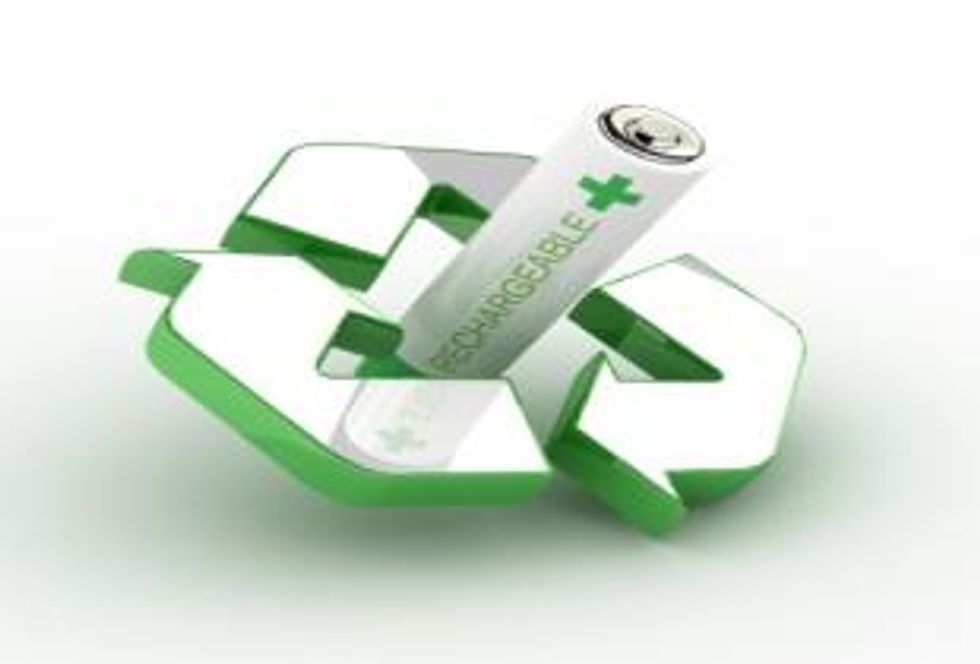A new Lithium-Ion battery that utilizes manganese may be the solution that is needed for renewable energy sources. The new battery, from Hitachi, is said to have double the output of regular Lithium batteries, with a life span of ten years. This may drive the future manganese market if use is widespread.
By Michael Montgomery—Exclusive to Manganese Investing News
Manganese, most commonly used in steel alloys to prevent oxidization, may have a highly profitable new usage. Lithium-ion batteries, used in almost every hand held electronic device in the market today, are on the verge of a technological explosion.Hitachi Ltd. announced a new lithium-ion battery that contains manganese, which has doubled the life of the batteries while increasing electrical output. This new battery may be pivotal in sustainable energy production, both wind and solar, as well as in the increasing hybrid and electric automobile market. “It is possible to realize a battery whose capacity decreases at half the rate and whose life is twice as long (more than 10 years) compared with the company’s existing battery cell,” reported Tsunenori Tomioka, of Tech On.
As Governments and large companies look to invest heavily in new renewable energy resources, new battery designs will be the most important cost saving step in the increasing profitability of the industry. Recently, the Obama Administration introduced $5 billion in funding for the development of a domestic battery industry with special focus on lithium-ion batteries. As the world commits to renewable energy, and the consumer electronics sector continues to grow, the use of manganese in these batteries may drive the manganese market for some time.
Manganese Company News
Aurora Minerals [ASX:ARM] announced that drilling is starting on their Capricorn Southeast Manganese Project located in central Western Australia. Drilling is set to commence April 12. The plan is to drill 30 prospect holes to find additional deposits of manganese ore:
“The initial drill program of up to 10,000m reverse circulation (RC) drilling will test the first 30 prospects, located within a 30km strike of the main manganese-mineralised sedimentary sequences… At the same time, continuation of last year’s highly successful prospecting and sampling program is expected to identify additional targets for drill testing,” reported Proactive Investors.
In addition to the reports of the drilling program, the company has also announced talks with Desert Energy [ASX:DSN] for a joint venture for the proposed Carmel Hills project in Australia. “Under the proposed terms Aurora will grant Desert Energy the option to earn a 70% interest in the project by funding and conducting exploration. As shareholders will be aware Aurora Minerals owns 47 million (53%) of the shares on issue in Desert Energy. The Company considers the deal a win-win for both parties,” noted Proactive Investors. Final details are not yet available, but are expected in the next few weeks.
Since the start of the year, both companies have seen gains in their share price. Aurora Minerals price as of April 12 is 1.07 per share, up from 0.74 at the start of the year. While Desert Energy has seen shares rise from 0.11 at the start of the year, to 0.19 as of April 12.
North America’s largest manganese mining company, Cia. Minera Autlan SAB, has reported larger than expected sales in the first quarter. “Preliminary first-quarter results show sales up 120 percent compared with the same quarter in 2009. Autlan said earnings before interest, taxes and depreciation likely increased 60 percent in the first quarter. Autlan rose 3 percent to 31.76 pesos,” reported Paulo Winterstein and James Attwood for Bloomberg.
The company’s share price has risen on the report that the company may issue a dividend this year. However, after the company’s significant losses last year, other analysts are not so confident. “There is speculation that the company may pay a dividend,” said Karla Pena, an analyst at Vector Casa de Bolsa SA, in a telephone interview; however, a dividend payment isn’t in her forecast because the company posted a loss of 107 million pesos ($8.65 million) for 2009, said Bloomberg reporter Nathan Gill.
